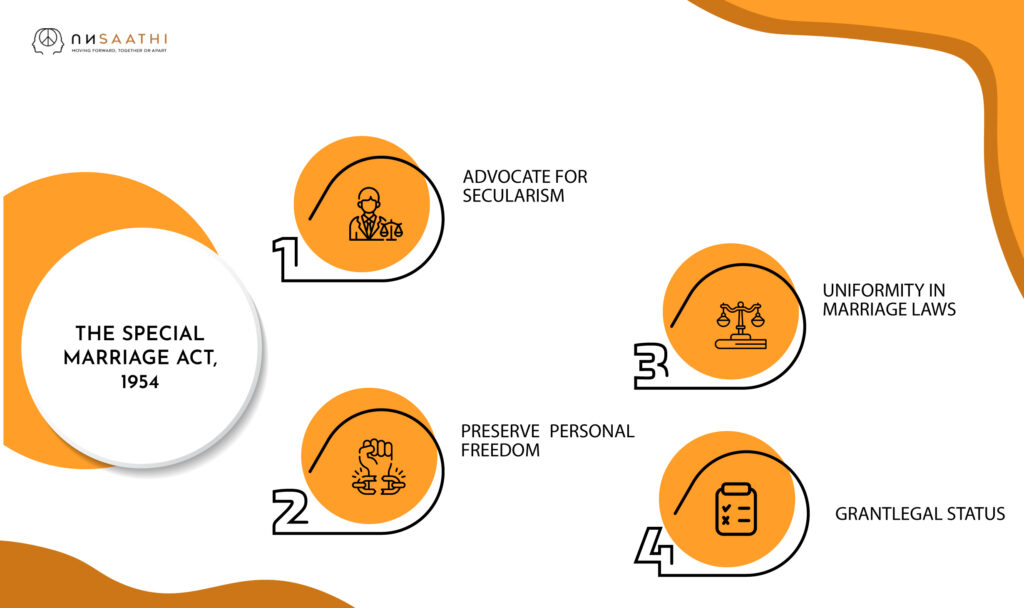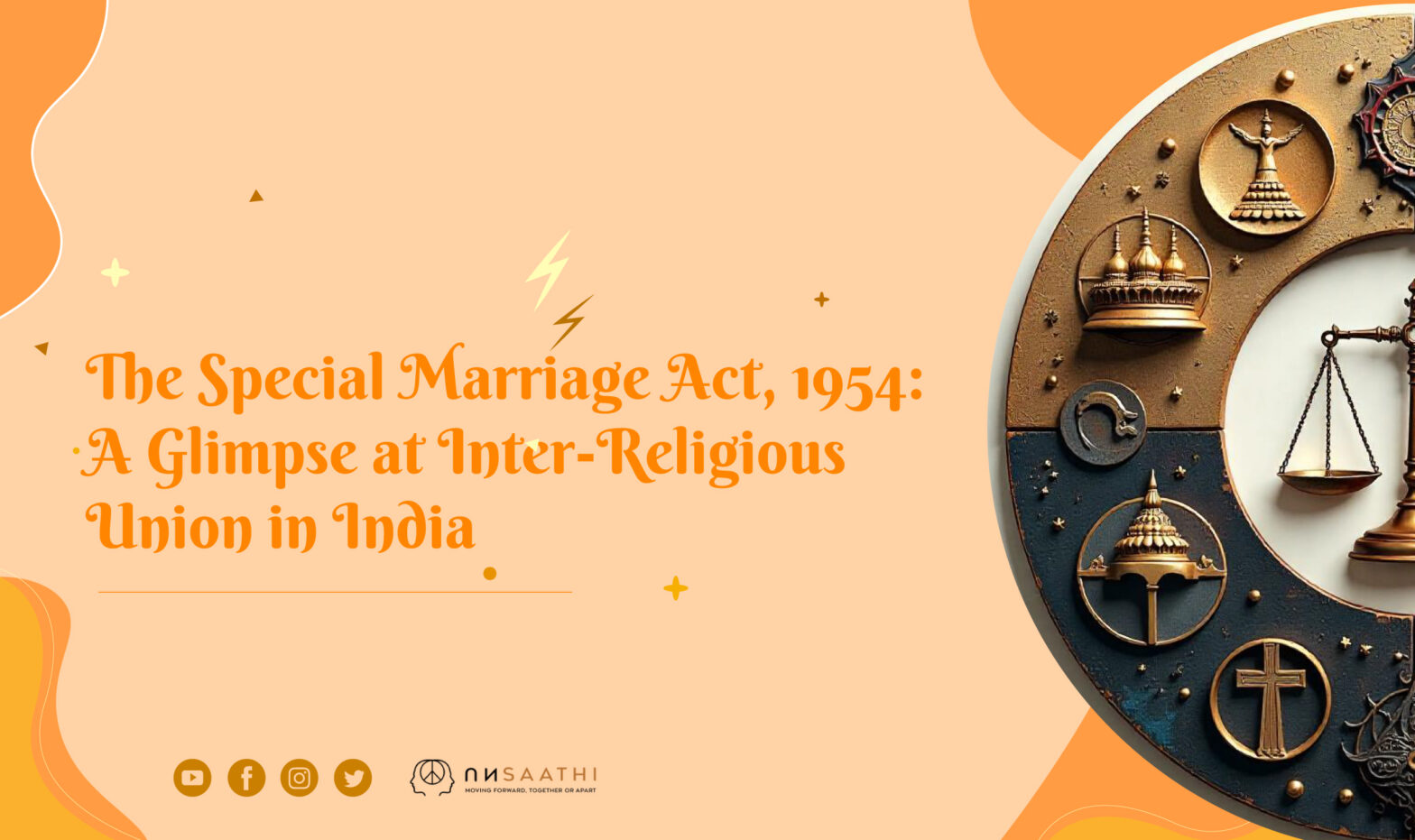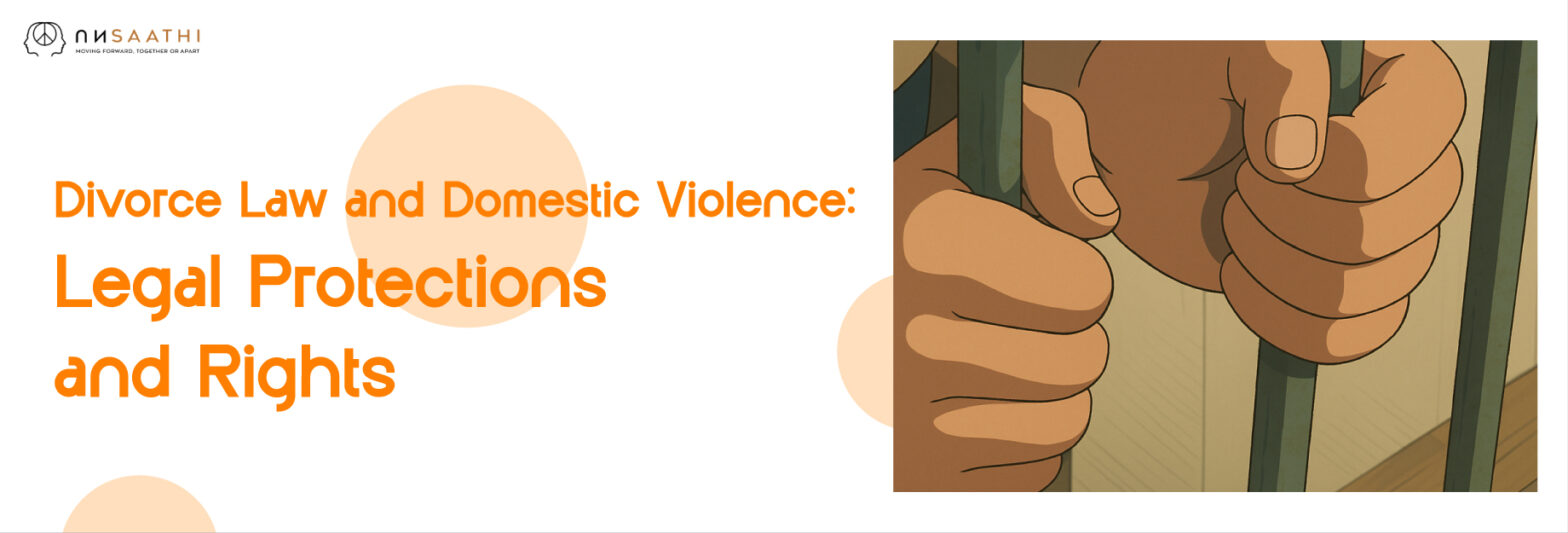The Special Marriage Act, 1954: A Glimpse at Inter-Religious Union in India

In a diverse country like India, where personal laws often get associated with one’s religion, the Special Marriage Act of 1954 is like a secular and inclusive light. It creates a legal framework for solemnising marriages between persons of different faiths or between persons who opt out of their respective religious personal laws. This act is a reaffirmation of India to the world and why we hold individual liberty paramount to any concept behind the sky that even mentions the individual right to a life partner, regardless of the social or religious dogma around.
The blog discusses the complexities of the Special Marriage Act of 1954, highlighting its historical background, relevant provisions, procedural aspects, and significance in modern-day India.
Historical Context And Rationale
The Special Marriage Act of 1954 (Act No. 43 of 1954) was promulgated on October 9, 1954, repealing the earlier Special Marriage Act (Act No. 3 of 1872). The 1872 Act was found to be because it required one to renounce one’s religion to marry under its provisions. Thus, the Act of 1954 was an attempt to reform this anomaly and provide a more secular framework for marriages.
The primary justification for the Special Marriage Act of 1954 was that:
- Advocate for Secularism: To enable interfaith marriages on legal grounds without requiring any conversion.
- Preserve Personal Freedom: Defend the right of individuals to choose their life partners regardless of social or religious constraints.
- Uniformity in Marriage Laws: To provide a common legal framework for marriages without religious personal laws.
- Grant Legal Status: To confer legal recognition and protection to marriages solemnised under its provisions.
Essential Features Of the Special Marriage Act of 1954
The act contains provisions regarding the solemnisation and registration of marriages.
Valid Marriage Requirements: Both parties must be single at the time of marriage (no living spouses). Parties should not be unable to give valid consent due to unsoundness of mind. Further, both parties should not fall within the degrees of prohibited relationship unless the marriage is allowed by the custom or usage governing each of them. Males should be at least 21 years of age, and for Females should be at least 18 years of age.
Notice of Intended Marriage: Notice in respect of parties who intend to marry each other under the act in the prescribed form is to be given to the Marriage Officer having jurisdiction in the district where any one of the parties shall have resided for a period of not less than 30 days immediately preceding the date of such notice. The Marriage Officer publishes this notice prominently in their office.
Objections to the Marriage: Any person may file an objection to the marriage within 30 days of publication of the notice in specified circumstances, such as on the ground that the marriage would contravene the conditions mentioned above. The Marriage Officer enquires into the objections and may permit or refuse the marriage.
Solemnisation of the Marriage: If no objection is raised or if the protest is rejected, the marriage may be solemnised at the Marriage Officer’s office or any other place within three months of filing notice. The marriage is solemnised before three witnesses.
Registration of the Marriage: The Marriage Officer registers the marriage in the Marriage Certificate Book, which the parties and witnesses sign. This registered certificate serves as a solid proof of the marriage.
Restitution of Conjugal Rights, Judicial Separation, and Divorce: The act sets down certain rights and liberties of parties during the continuance of marriage (though it is valid for marriages solemnised under its provisions), such as restitution of conjugal rights, judicial separation, and divorce, among others. The grounds for divorce are similar to those under secular divorce laws.
Matters of Succession: The succession of property under marriages solemnised under this act shall be governed by the Indian Succession Act, 1925. Procedures for filing under the Special Marriage Act of 1954.
Solemnisation Of Marriage
There are various steps involved in solemnisation of marriage under the act:
- Notice of Intended Marriage: Both parties shall give a notice of intended marriage to the concerned Marriage Officer of the district in which at least one of them has been residing for 30 days.
- Aggregation: The Marriage Officer publishes the notice and has a 30-day window for objecting.
- Objections: In case there are any objections, the Marriage Officer will investigate and decide if they are valid or not
- Solemnisation: If there are no objections or they are overruled, then the marriage is solemnised in the presence of three witnesses.
- Registration: The marriage becomes legally valid once registered in the Marriage Certificate Book.
Significance of the lecture in present-day India
The relevance of the Special Marriage Act of 1954 lies in contemporary India, as mentioned below:
Interfaith Marriages: This allows couples to marry without being required to convert. With the world’s growing interconnectedness and the increase in interfaith relationships, this act provides legal protection and acknowledgement of these unions.
Mutual Consent: There is no lifelong tie, and it breaks the myth that you must spend the rest of your life with your partner.
Secularism: Although not discriminatory based on religion, it helps save the secular fabric of the Indian Constitution by offering a neutral legal framework for marriages – uniformity in divorce and maintenance provisions for all genders, etc.
Legal protection: It ensures safety and strengthens the rights of those who decide to marry under its terms.
Risk Assessment and Mitigation of the Special Marriage Act of 1954
Despite the same, the Special Marriage Act of 1954 does have specific challenges:
30-day Notice Period: The 30-day notice period to raise objections is intrusive and may invite social pressure/interference, such as in conservative communities.
Low Awareness: The Act is little known, and even fewer people know how to take advantage of its provisions.
Bureaucratic Hurdles: The procedural requirements are pretty cumbersome and time-consuming, discouraging many couples from choosing this route.
Social stigma: There can be social stigma related to couples who choose to marry under the act. Couples can also face disapproval from their families or communities.
The Way Forward
Some of the significant improvements that can be proposed to make the Special Marriage Act of 1954 more effective and accessible are:
Less Red Tape: Easing procedural implications and red tape.
Public Awareness Campaigns: It is highly suggested conducting public awareness campaigning to make people aware about the act and its advantages.
Combating Social Stigma: Encouraging inter caste marriages and marriage performed through the act.
Updating the Provisions: Modernising the provisions of the act to address contemporary social realities and emerging legal challenges.
Legal aid: Assisting legal aid. Legal and counselling services are provided to those couples intending to marry by the act.
Conclusion
Introduced in 1954, the Special Marriage Act is an essential piece of legislation that has played a meaningful role in safeguarding the values of secularism, individual liberty, and gender equality in India. The purpose of civil unions is to create a legal structure for marriages that cross religious and social lines and be legally recognised and protected. The act sticks to its relevance in present-day India, notwithstanding the hurdles. With the constant changes in our society, it is essential that this legislation stays relevant and correctly addresses and represents the needs of those who it is being designed to protect. Also, it will facilitate the promotion of its use and thus strengthen India’s commitment to a just and inclusive society.



